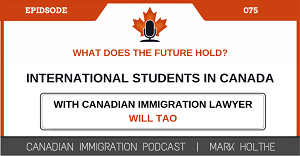Another Peer Review We’re Making Public: Privately Sponsored Refugee Automation
We have access to a new peer review thanks to the ATIP prowess of Andrew Koltun. This one is for the Automation Tools on Privately
Award-Winning Canadian Immigration and Refugee Law and Commentary Blog
We have access to a new peer review thanks to the ATIP prowess of Andrew Koltun. This one is for the Automation Tools on Privately
One of the big debates around Chinook is whether or not it is Artificial Intelligence (“AI”). IRCC’s position has been that Chinook is not AI
On 14 April 2021, the Minister released a Temporary Public Policy (“TPP”) for international graduates, including the creation of a 40,000 cap for those with

Hi VIB Readers: It’s been a minute. A Recent Podcast I wanted to share something I did not too long ago (Pre-COVID).
Will Tao is an Award-Winning Canadian Immigration and Refugee Lawyer, Writer, and Policy Advisor based in Vancouver. Vancouver Immigration Blog is a public legal resource and social commentary.
he/his/him
Acknowledges that he lives and works on the traditional, unceded territories of the Coast Salish peoples – sḵwx̱wú7mesh (Squamish), sel̓íl̓witulh (Tsleil-Waututh), and xʷməθkʷəy̓əm (Musqueam) nations.
This site reflects my personal opinions and views only and should not be relied on and should be verified prior to any professional use. Please note that none of the information on this website should be construed as being legal advice. As well, you should not rely on any of the information contained in this website when determining whether and how to apply to a given program. Canadian immigration law is constantly changing, and the information above may be outdated. If you have a question about the contents of this blog, or any question about Canadian immigration law, please contact the Author.